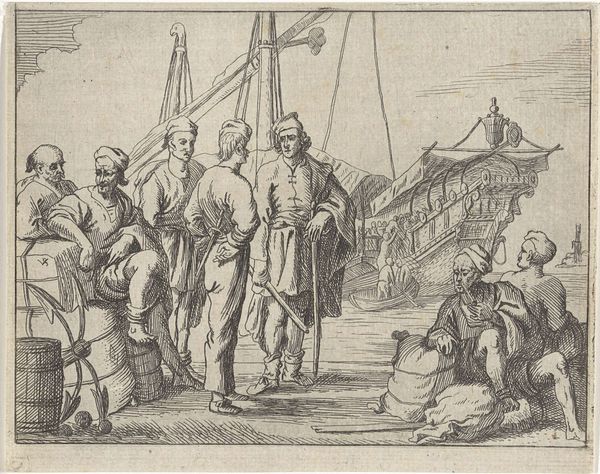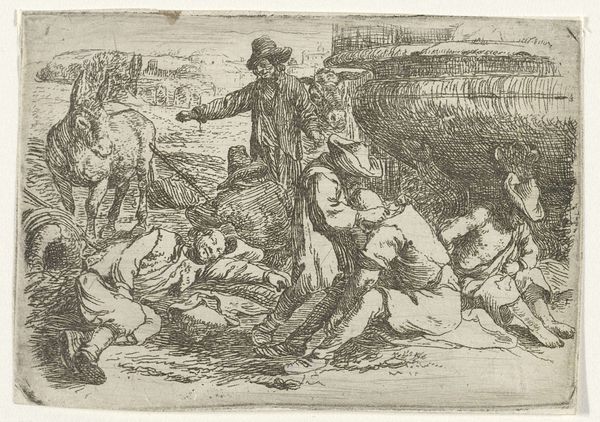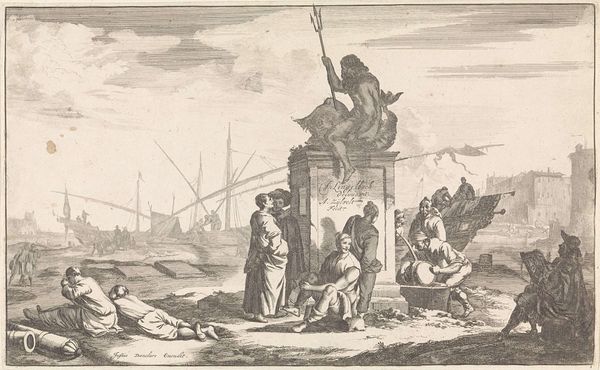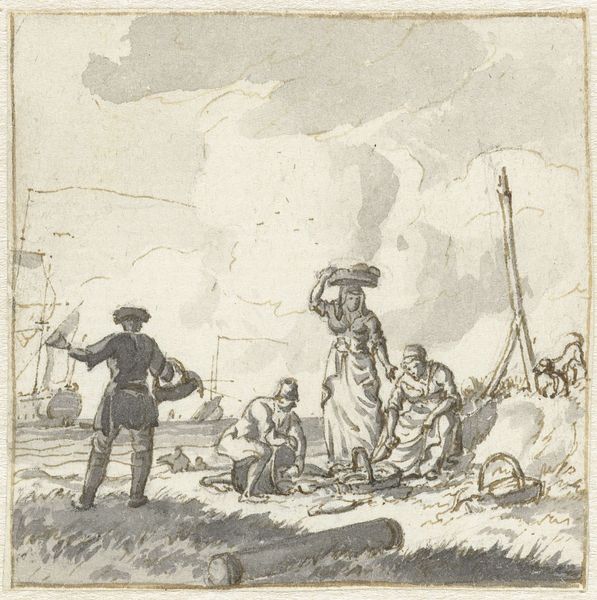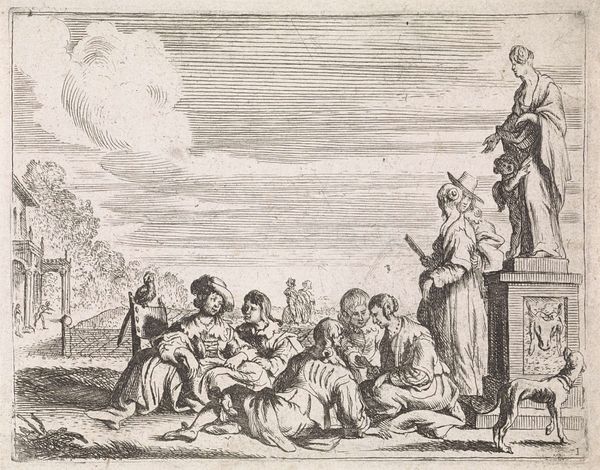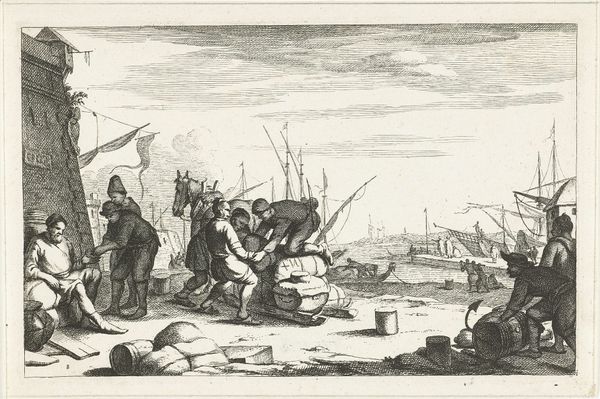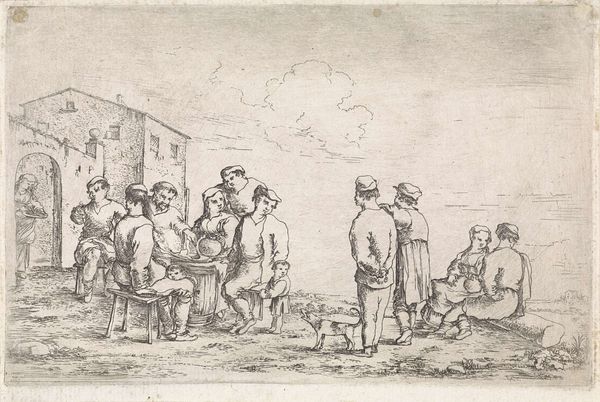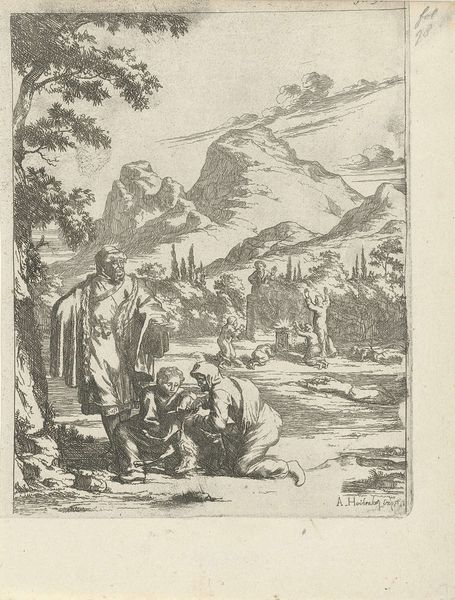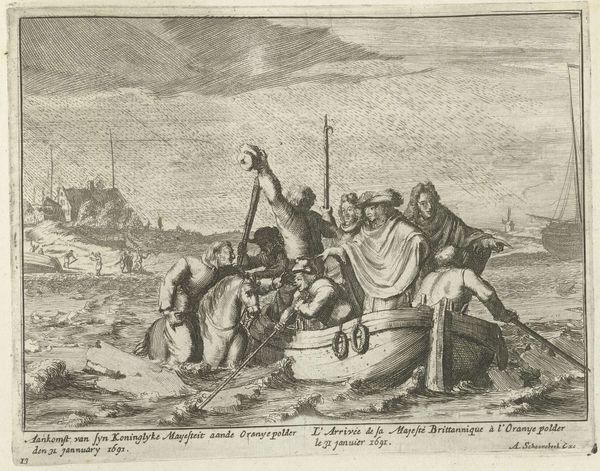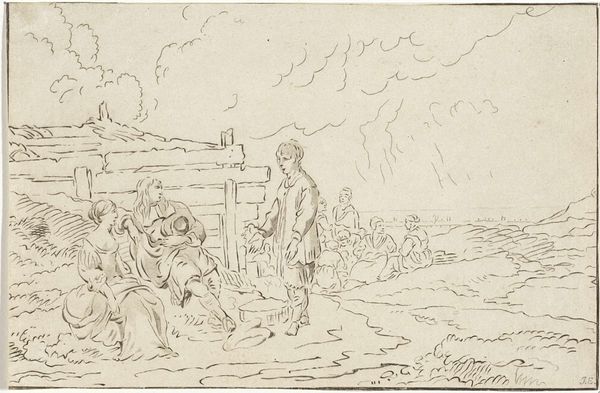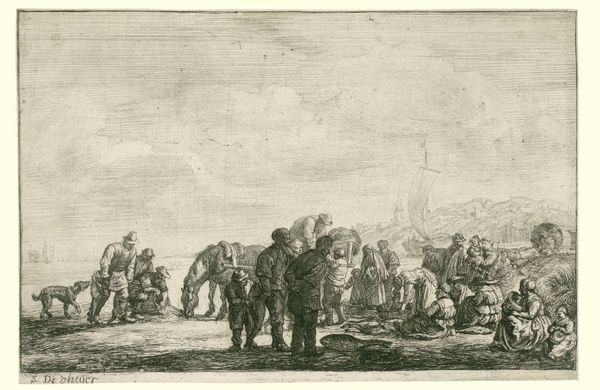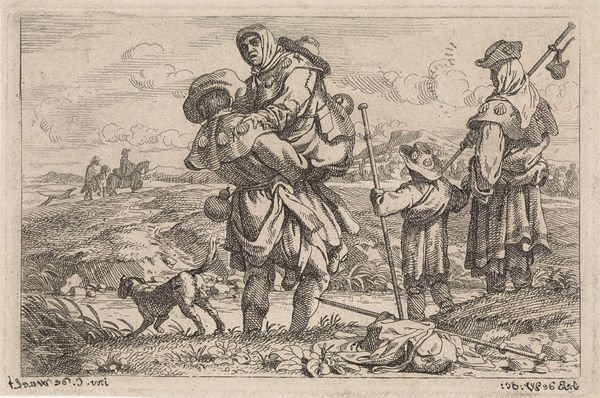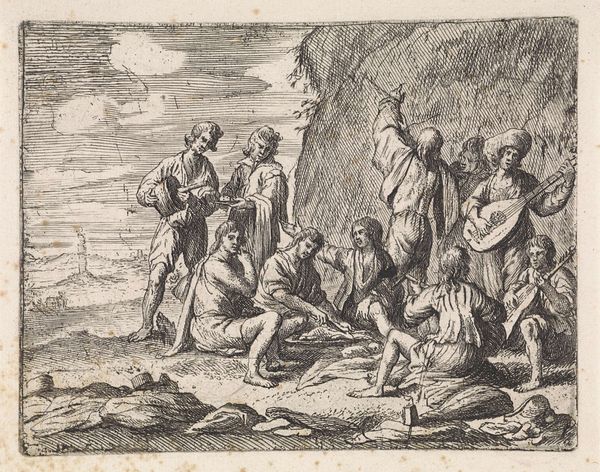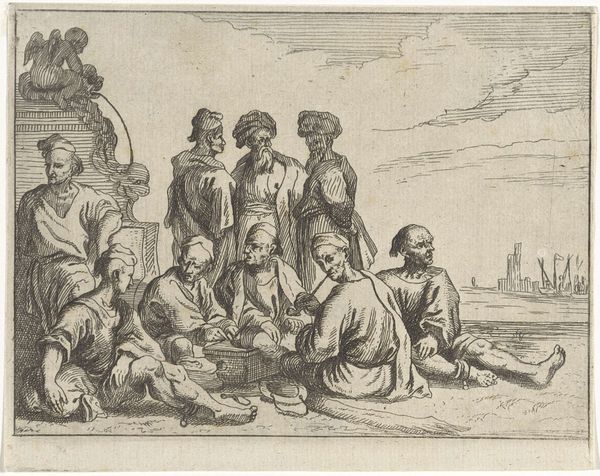
#
landscape illustration sketch
#
comic strip sketch
#
narrative illustration
#
mechanical pen drawing
#
pen illustration
#
junji ito style
#
personal sketchbook
#
ink drawing experimentation
#
pen-ink sketch
#
storyboard and sketchbook work
Dimensions: height 116 mm, width 177 mm
Copyright: Rijks Museum: Open Domain
Editor: So, this is "Company in the Dunes" by Bernhard Schreuder, created sometime between 1767 and 1780. It’s at the Rijksmuseum and is done with pen and brown ink. There's something almost theatrical about it, the way the figures are arranged, almost like a stage set. What do you see in this piece? Curator: I see an emphasis on the means of production—look closely at the penmanship itself. The cross-hatching and varied line weights are not just descriptive; they're performing labor. Schreuder's technique isn’t about creating an illusion, it’s foregrounding the act of making. The figures and landscape are less important than the visibility of artistic skill at play. Does the scene suggest to you leisure or labor for the individuals portrayed? Editor: That's interesting, I hadn't thought about it like that! I was caught up in trying to figure out the story. But now that you mention it, the roughness of the drawing clashes with the leisurely scene. I wonder if it points to the work involved in portraying leisurely classes. It seems like it is questioning the social stratification that results in an uneven distribution of time between work and play. Curator: Exactly! And think about the 'duinen'—the dunes. They are both a landscape and a resource. What kind of labor went into manipulating or traversing that land? Whose labor? Where does this artwork circulate, and who owns it, in terms of material possessions and in terms of social representation? Consider where this artwork would be hung and displayed; would this representation resonate among laborers, who have different experiences in and around this scenery? Editor: So, you are suggesting that we move away from simply admiring the artwork and try to place it in a larger network. It challenges the concept of art as divorced from labour, by showcasing its inherent value for those who may be unable to participate directly in producing visual culture, and asking whose consumption does art serve. Curator: Precisely. Seeing art as both the product of and a commentary on material conditions. It offers more meaningful discussion by asking challenging questions about cultural artifacts and what function these have across social classes. Editor: That’s given me a lot to think about in terms of the labor and material conditions involved!
Comments
No comments
Be the first to comment and join the conversation on the ultimate creative platform.
